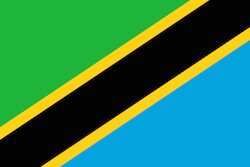Continental Energy Corporation, an emerging international energy investment company, announced that its Tanzanian affiliate, Ruaha River Power Company Ltd. has begun construction of the Phase-I development of its Malolo Mini-Grid. They have also begun signing up first subscribers from a waiting list of 400 customers. The Mini-Grids are being installed in an area surrounding the village of Malolo and three nearby villages, all located in the Kilosa District, Morogoro Region, Tanzania.
The Malolo Mini-Grid is the first of four separate, isolated rural “Mini-Grids” to be built, owned, and operated by the Ruaha Power, from which  it intends to generate, distribute, and sell electrical power directly to consumers at pre-payment meters. When complete, the four Malolo Mini-Grids will have a combined generation capacity of 300kW and each Mini-Grid shall directly deliver 75kW of power to a combined total of approximately 2,500 identified residential, commercial, and light industrial customers.
it intends to generate, distribute, and sell electrical power directly to consumers at pre-payment meters. When complete, the four Malolo Mini-Grids will have a combined generation capacity of 300kW and each Mini-Grid shall directly deliver 75kW of power to a combined total of approximately 2,500 identified residential, commercial, and light industrial customers.
Phase-I of the Malolo Mini-Grid development is expected to begin delivering power by the end of the first quarter of 2015. It involves the installation and commissioning of the first embedded generators, a 25kW hybrid biomass gasifier and a 25kW diesel generation plant, together with more than four kilometers of low voltage distribution network.
The distribution network will be constructed to standards sufficient for connection to the national grid at such time as it may be extended into the Malolo Mini-Grid area. A 21,500 square-foot site near the village of Malolo has been acquired for the first generator house and power line easements have been arranged. Civil works and the construction of the first powerhouse and office has begun and are expected to be complete by year end.
A Phase-II development is planned to add solar PV capacity to complete a hybrid biomass-solar PV-diesel powered Mini-Grid. Ruaha Power plans to duplicate the Phase-I and Phase-II development at each of the other three villages, one after the other, upon completion of Phase-II of the first network.

